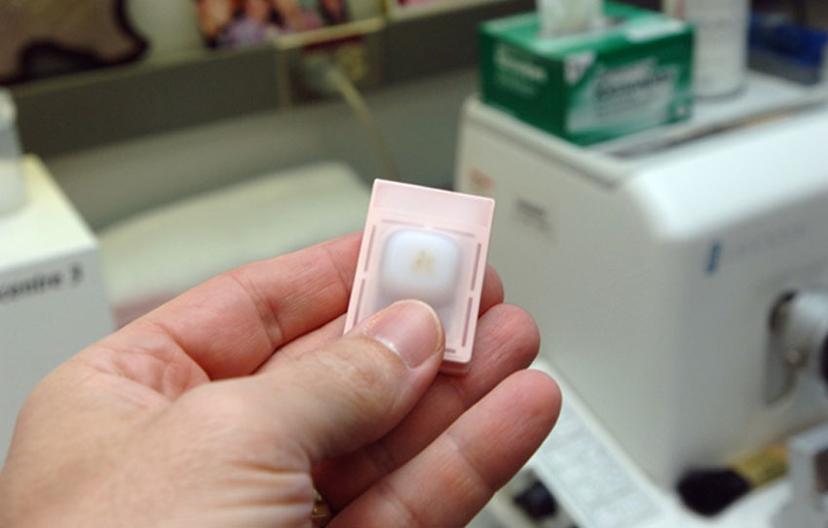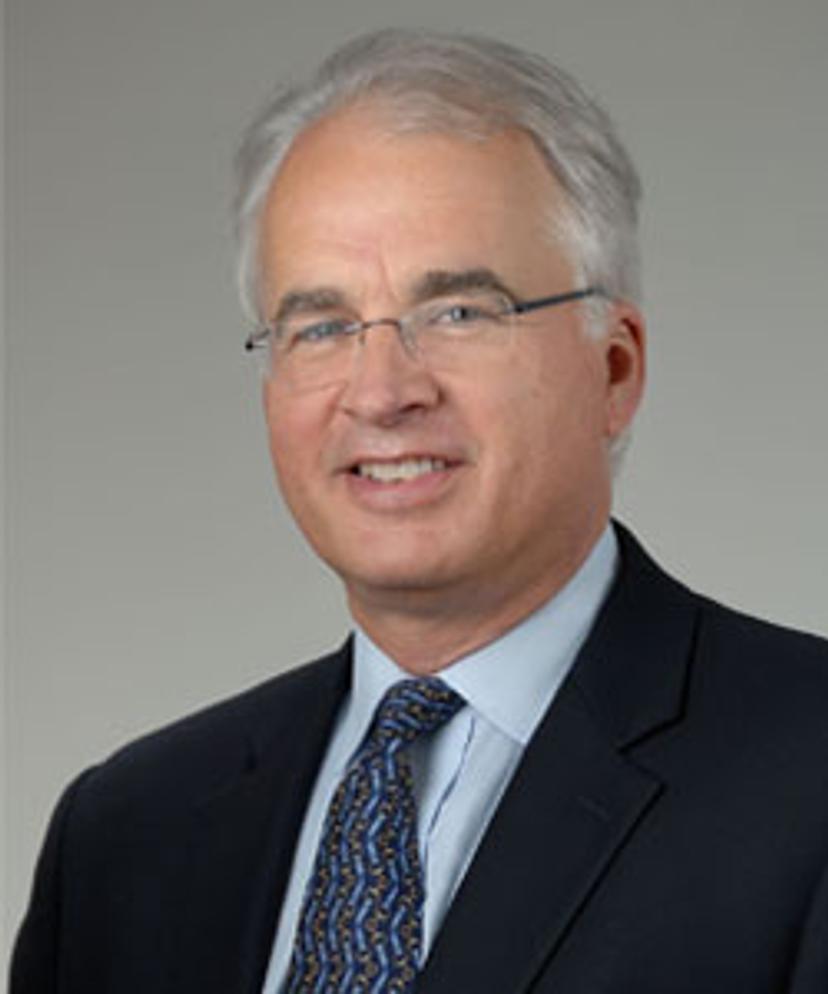How Retrospective Genetic Studies at NIH Are Providing Answers for the Future of Cancer
Dr. Stephen Chanock, National Cancer Institute, shares the latest cancer epidemiology studies at the NIH and the team’s hopes of being able to predict and prevent disease
9 Oct 2017


Dr. Stephen Chanock is an award-winning scientist and a field expert in the genetics of cancer susceptibility. He serves as the Director of the Division of Cancer Epidemiology and Genetics at the U.S. National Cancer Institute, National Institutes of Health (NIH)
SS: You lead a very exciting team of scientists at NIH. Can you tell us more about the group and the research that you carry out?
SC: I’m the director of a large intramural research program of about 75 investigators at the National Cancer Institute (NCI), and we study the causes of cancer with an eye towards prevention. We have a very large research portfolio looking at the intersection of epidemiological risk factors and genetic susceptibility in cancer. Our team comprises a combination of epidemiologists, geneticists and statisticians. Our studies investigate the role of genetics in understanding or modifying, and potentially predicting and preventing cancer. For some of our epidemiologically rigorous studies, we’ve had a 40-year commitment to collect biospecimens. Now, we even extend this to actually look at the tumor sample so we can work backwards to be more accurate in the future – this is what we call precision prevention.
SS: What are some projects you’re currently working on?
SC: We have a wide range of studies. We’ve done scores of genome-wide association studies and next-generation sequencing studies to identify cancer susceptibility alleles, with a goal of developing a comprehensive map of all the variants that contribute or co-contribute to different types of cancers, such as breast cancer and pediatric cancer. In a number of our studies, we’ve collected samples over the years.
One of our current projects focuses on what drives radiation-induced cancer and what are the global effects of radiation on tissue. We have a long-term follow-up of people exposed to radiation in the Chernobyl nuclear accident. We’re now doing a large-scale sequencing project – starting with fresh frozen but moving to FFPE samples – of young adults and children who develop thyroid cancer in Belarus and Ukraine. Our goal is to follow these individuals and see if there are any radiation signatures: to understand what is the difference between radiation-induced thyroid cancer and the thyroid cancer that occurs sporadically. We have similar studies going on in thyroid cancer and breast cancer in Hiroshima. We followed the survivors of the Hiroshima atomic bombings and we’ve worked with the cohort for almost 40 years.
Another large FFPE-based study looks at lung cancer and its association with indoor air pollution in China. People in certain regions of China have very high rates of lung cancer. It was later discovered that it had something to do with the lack of ventilation of the cooking oil used. We have investigated these exposures and the circulating biomarkers, and, now, we have the germline as well. We’re going back to these FFPE samples and investigating if there’s any difference between these types of non-smoking lung cancers versus smoking-induced ones.
We’re also working on sequencing second-time cancers that recur after treatments to really try to understand its etiology and examine any signatures that are different from sporadic cancer. A large study in Ghana using FFPE samples focuses on 900 women with, and 2000 women without breast cancer. Investigating homogeneous populations in West Africa serves as an important source population for African American women, and can help us understand why there is higher risk for breast cancers in these subpopulations.
We followed the survivors of the Hiroshima atomic bombings and we’ve worked with the cohort for almost 40 years.
Dr. Stephen Chanock
National Cancer Institute, NIH
SS: In designing retrospective and epidemiological studies, especially using FFPE samples, how does your team prepare for experiments?
SC: In our mind, we know that fresh frozen is always preferable. But the reality is that researchers have access to many FFPE tissues to perform different studies in bladder, kidney, breast or thyroid cancer. So, we spend a lot of time figuring out the acceptable extraction protocol for whole genome assessment. FFPE samples can be used for targeted sequencing of RNA or of DNA, and such a study works under select circumstances. However, fresh frozen – when archived accurately – is much more amenable and robust to large-scale sequencing.
SS: Where do geneticists stand when it comes to choosing FFPE versus fresh-frozen samples for large-scale experiments?
SC: There are two worlds: the fresh-frozen, which we would go to first every time, but is not always available. So, for much of the investment we’ve made in etiological studies, it’s only FFPE tissue, as that is what was stored or made available in the past.
Preparing fresh-frozen tissue is a very laborious task. One needs to take the fresh tissue and, within minutes, put it into liquid nitrogen. In international studies, the surgeons performing the biopsy and the oncologist in the center have to be dedicated to performing the steps involved. You can imagine for a study in remote parts of the world, with limited resources, getting fresh-frozen tissue would be pretty challenging.
For existing studies, FFPE is what we have to work with. We don’t want to let perfection get in the way of a good opportunity. FFPE-based epidemiological studies can be clinically driven, and they would become important for clinical decisions and drug choices.
The field of FFPE is evolving. There are a series of variables that can affect the experimental outcome – how well was the FFPE actually performed in terms of the embedding? At what time did they do it? In the past few years, reagents changed from unbuffered to buffered solutions – these will affect the way older samples were prepped. For our studies, we test different assays and conditions to get the best yield of nucleic acids for our desired downstream application.
For existing studies, FFPE is what we have to work with. We don’t want to let perfection get in the way of a good opportunity.
Dr. Stephen Chanock National Cancer Institute, NIH
SS: What is the future of sample-processing in genome-wide and sequencing studies?
SC: With FFPE sample processing, I believe we are slowly moving ahead like a work in progress, but we’re far from having the most optimal standards. We are yet to achieve the high standards to make different studies inter-comparable – different groups that have different protocols need to eventually get the same outcome. This becomes particularly important on the clinical side to address false-negatives, where patients with mutations miss out on the opportunity for a treatment. Lots of companies and academics are getting involved in the advancement of tissue processing for genetic studies, so that we can move the dial steadily ahead.
SS: You’ve seen the field of cancer genomics evolve so much over the years. What do you consider as your group’s most important advancement in this field?
SC: Our most important advancements in cancer genomics have been focused on identifying and characterizing cancer susceptibility alleles, through both family studies and large genome-wide association studies. We are beginning to understand the spectrum of differences and similarities in the underlying genetic architecture of distinct cancers. In other words, we are beginning to see what uniquely contributes to distinct cancers while also finding common threads between cancers, both of which offer clues to elucidate the relationship between exposures and genetic susceptibility to cancer.
